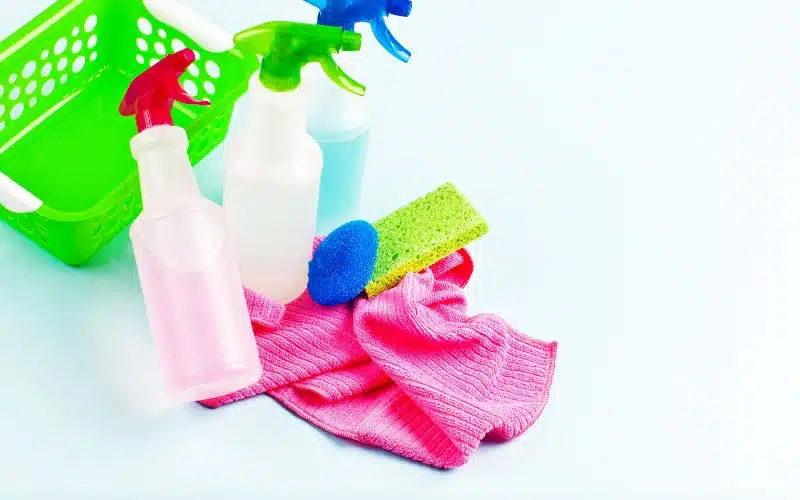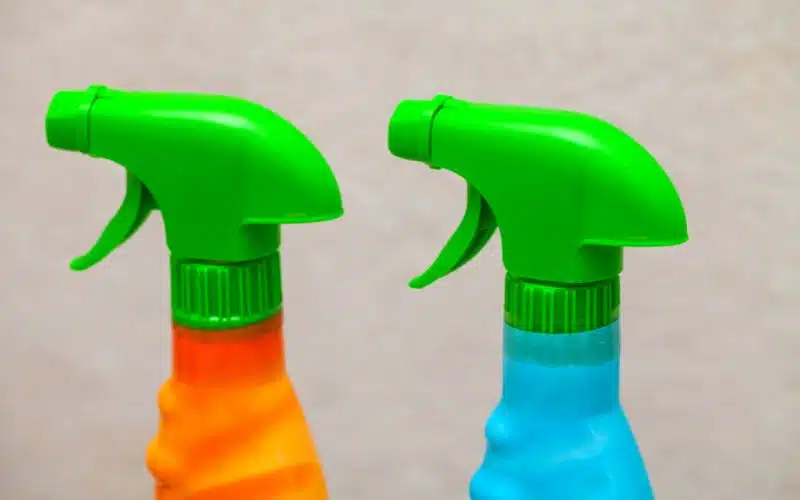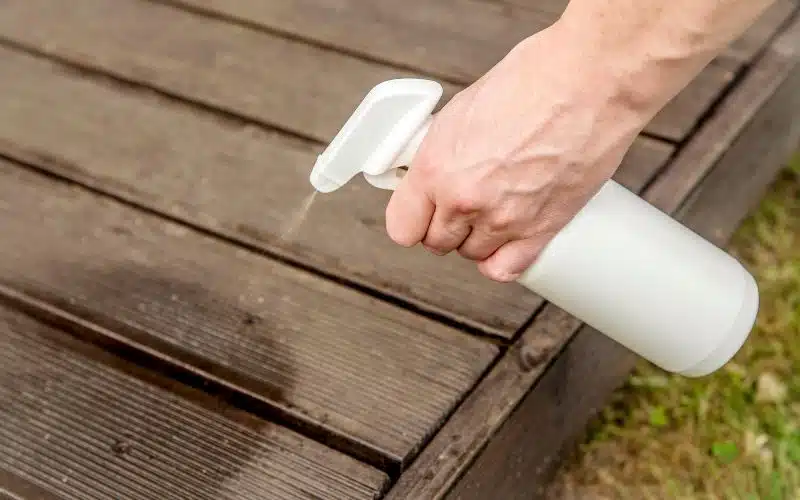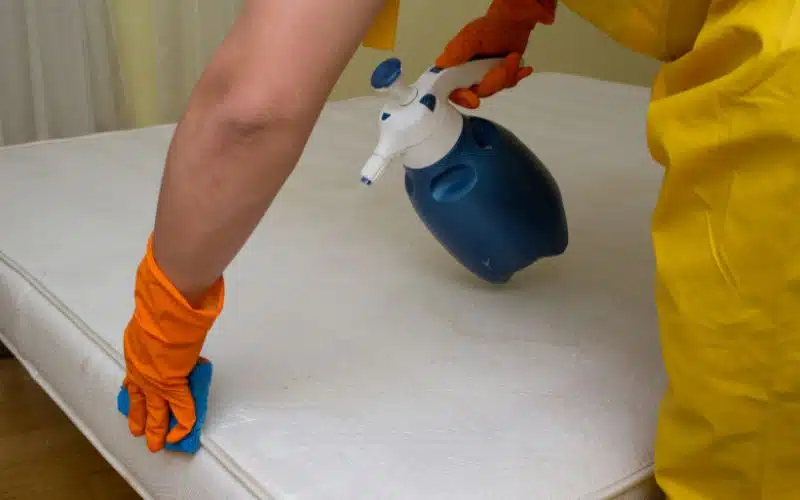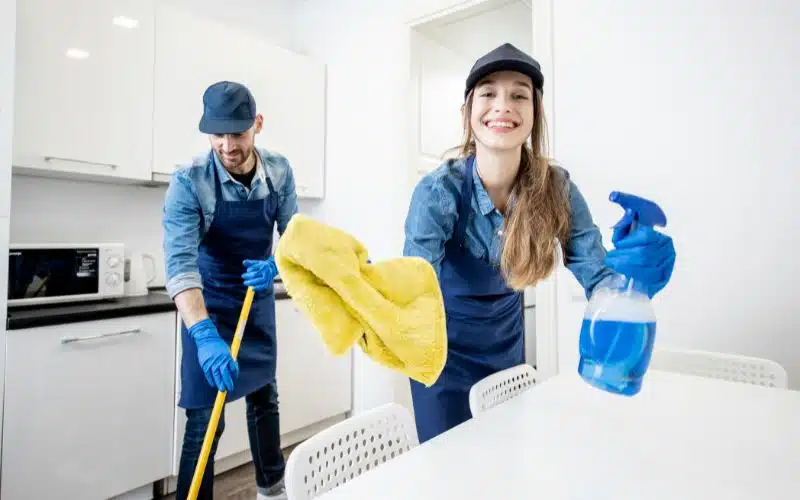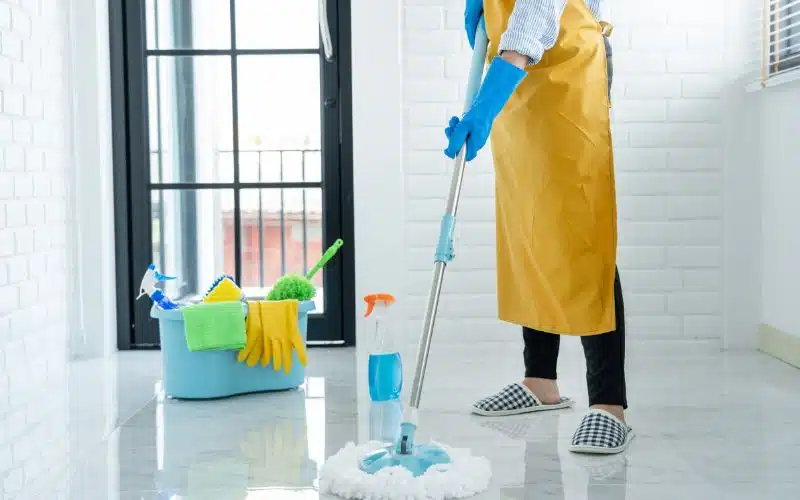Brillo pads effectively remove stains and give your kitchen stainless steel pans, sinks, and pots a sparkling look.
However, even though homeowners can use brillo pads for scrubbing tough stains, they could leave scratches on the pots and pans.
So it brings us to the question. Should Brillo pads be used on stainless steel?
Brillo pads give stainless steel a shiny and bright look. They are best for cleaning and scrubbing pots and pans. It cleans better and is extra effective than most steel sponges and stainless pads. They are not only used for kitchen steel but also for cleaning the shower steel and other steel equipment in the home.
Can You Use a Brillo Pad On Stainless Steel?
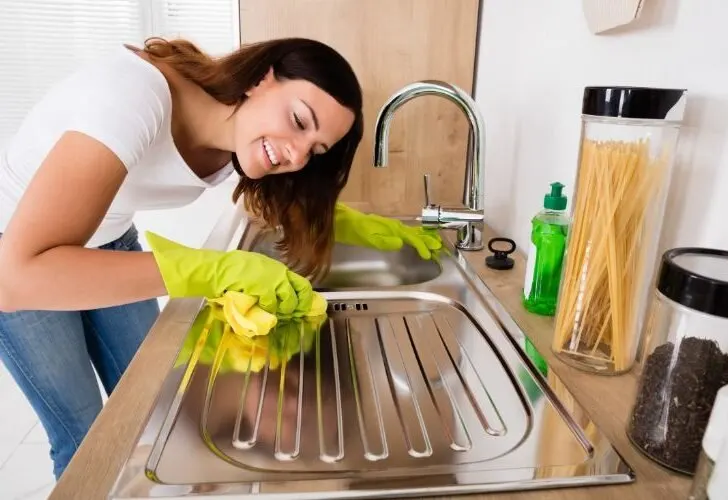
Brillo pads are highly effective for cleaning various household equipment, from kitchen utensils to bathroom equipment.
This equipment includes dishes, stovetops, countertops, and cast irons. Brillo pads remove rust, corrosive lines, and grease on stainless surfaces.
Brillo pads are capable of scratching off stainless steel surfaces. They have abrasive surfaces that are not supposed to be on stainless steel.
On the other hand, stainless steel equipment is known for its durability and excellent resistance to rust and corrosion.
The sleekness can be maintained and retained after a long time once you know how to clean and handle the steel appropriately.
For example, Brillo pads leave off tiny scratches when scrubbed on stainless steel with force.
Fortunately, even though you can not control the tendency of having scratches on stainless steel, no matter how delicate you handle them, they are very efficient methods of removing faint or deep scratches from stainless steel.
Brillo Pad On Stainless Steel Pans
Brillo pads are very harsh on stainless steel pans. These pans have fine finishing and are susceptible to abrasives that create iron particles, which results in quick rust and corrosion of pans.
In addition, stainless steel pans require thorough cleaning after each use to help reduce the tendency to scrub out the coated layer when the food particle becomes too dry and stuck on them.
You can use other known abrasives to remove scratches that may have appeared on your pan.
The abrasive to use depends on the scratch’s intensity. For example, the scratch could either be a faint or deep one.
#1. Faint And Shallow Scratches
Using toothpaste, a toothbrush, a microfiber cloth, and olive oil to remove faint steel scratches is highly effective.
It is done by applying toothpaste on a toothbrush and brushing over the scratches for at least five minutes. Next, ensure to follow the natural grain lines of the pans for each spot.
After this, clean the toothpaste with a damp cloth and check the pan for any visible scratches.
If there are still traces of scratches, repeat the process or apply olive oil on a damp cloth and continuously rub on the grain lines.
#2. Deep Scratch
There are two methods used to remove deep scratches from stainless steel pans. You can use a compound scratch remover or use sandpaper.
#1. Method 1: Compound Scratch Remover
This method requires mixing the compound scratch remover, which is often powdered with water to create a paste.
After this, you must use a microfiber cloth to rub the paste back and forth while you follow the grain lines.
Next, use a second cloth to dampen the paste and another to clean off all paste and wetness.
#2. Method 2: Sand Paper
Sandpapers are effective for stainless steel pans that are either uncoated or have plain surfaces.
This method requires damping the paper and rubbing it over and over on the scratches. Ensure to sandpaper in one direction until you are satisfied with the results you see.
After this, use another sandpaper to create finer grits, add olive oil and wipe the paste off with a clean cloth.
Brillo Pad on Stainless Steel Sink
Brillo pads can be used on stainless steel sinks and are essential for cleaning, scrubbing, and removing dirt.
However, this does not necessarily mean that they should be the only scrubbing agents for steel sinks whenever there is dirt on your kitchen sink.
The reason is that the continuous use of Brillo pads can cause the sleek look of the sink to fade away or even become unattractive.
First tiny invisible scratches begin to pop up, then full-blown scratches that soon turn to rust, corrosion, and permanent stains.
They are a host of cleaning soap pads that offer great satisfaction and minimal worries when you use them to clean your stainless steel.
Your stainless steel manual explains the best products for cleaning your sink.
Can You Use Brillo Pads On Non-Stick Pans?
Brillo pads are effective on non-stick pans to remove dirt, dust, and food particles without damaging the coated layers.
One other important use of Brillo pads on stainless steel is their use as abrasives and grain line keeper.
However, extreme care is applied when scrubbing the surfaces of a non-stick pan, mainly because the pan has a coated surface.
The solution is to use appropriate cleaning sponges and soaps for washing and scrubbing pans.
Abrasive surfaces such as Brillo pads are not ideal on stainless steel-coated surfaces. Nevertheless, using Brillo pads on non-stick pans is economical and eco-friendly.
The abrasive surfaces on the Brillo pads remove dirt and food particles on the pans without leaving any trace of oil, butter, and even soot. Besides, the Brillo pad is more durable than oil or butter pads.
How Do You Get Brillo Pad Scratches Out Of Stainless Steel?
Stainless steel is the primary material in household appliances due to its durability and sleekness. However, it is only stain-free but not scratch resistant.
These scratches could either be deep and visible scratches or very light faint scratches. Fortunately, the scratches on stainless steel can easily be reversed and removed.
To remove the scratches on stainless steel, the first thing to consider is the intensity of the scratch and the direction of the grain lines on the steel.
The scratch’s intensity encompasses the lightness of the steel material, the deepness, shallowness, and the scratch’s intensity.
On the other side, the grains give you directions when cleaning and scrubbing lines off. They may be vertical and even horizontal lines running from one side of the metal to the other.
It is worth noting that these lines, if scrubbed off in circular and perpendicular directions, result in more adverse damage to the stainless.
Let’s go through the cleaning processes for deep scratches, shallow scratches, and grain lines without further ado.
| Shallow Scratch | Deep Scratch | Grain Lines |
|---|---|---|
| Use non-abrasives steel scratch removal to clean the scratch. | Deep and tougher scratches require abrasive pads to remove them properly. | For smaller scratch lines, ensure to use nonabrasive materials to scrub them off. While more extensive lines are effectively stubbed off using abrasives. |
| Homeowners can apply everyday household items such as baking soda and toothpaste gel to shallow scratches, which works fine in removing them. Only use microfiber cloths in applying the abrasives or whatever product you choose to use when scrubbing light steels. | Homeowners can also use kitchen equipment and tools to rub off stains. They include a scouring pad, scrubbing sponge, and olive oil. Deep scratches are supposedly scrubbed out only on uncoated steels. The coating serves as a protective layer. You may need to consult the Manufacturer’s manual for what to do. | Always use damp microfiber clothes when cleaning grain lines on the stainless steel. Grain lines are more complex to deal with and require precision when cleaning them. Going against the grain lines may cause more harm than good. Ensure to use minimal force on the steel, especially coated ones. |
Many high-end products give satisfactory results when used as cleaning abrasives. They include Rolite Metal Polish, Stainless Steel Scratch Removal Kit, and 3M Rubbing Compound.
Final Thoughts
Stainless steel is a common household material and equipment such as pans and sinks. Stainless steel pans and sinks require intensive cleaning from time to time.
However, no matter how efficient they seem, abrasives such as Brillo pads are not recommended for coated stainless steel and should not be used to clean or scrub them.



